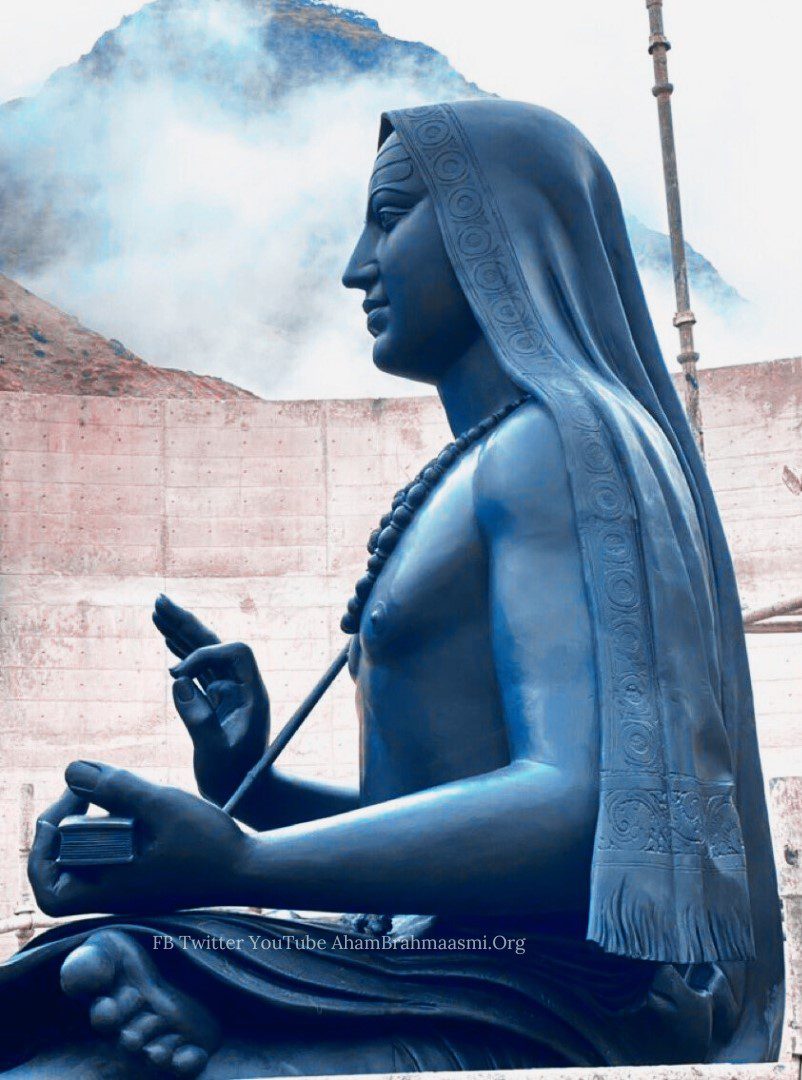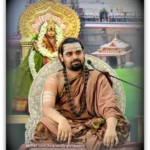यत्र प्रयोजनं स्यात्प्रतिपादयति श्रुतिस्तदेवासौ । (स्वात्मनिरूपणम्) “Veda propounds as established truth only that which has value (for man).” Value can be either an end in itself or a means to an end. The highest aim and ultimate goal of life hold the greatest value for a person. Therefore, attaining or preserving this ultimate goal can be seen as the cosmic purpose of Bhagawan. Is the highest value one which is “ever in the making,” or one which is ever present, ever permanent? This is the question of questions in philosophic inquiry. Sanatana Dharma has always faced challenges from other beliefs that see value as something that must constantly struggle against evil. These beliefs say that this struggle happens continuously in space and time, so ultimate value can never be fully achieved, only approached over time. People can participate in these evolving values but can never reach the highest value as the ultimate goal. In contrast, the Vedas teach that the innermost Bliss of Love, which is one and absolute, is an ever-present reality (सिद्धवस्तु). This Bliss is the true goal of all our struggles in a world filled with uncertainty and the dualities of good and evil, joy and sorrow, heat and cold, and so on. This world of constant change and limitations seems real until we discover the true nature of our inner Self, which is pure Bliss and one without a second. The value of our experiences in this world, full of births and deaths (Samsara), is that they help us purify our minds (चित्तशुद्धि) and prepare for realizing this true Self. However, while living in this world, we must endure many sorrows, troubles, and disappointments, so it cannot be our ultimate goal. मामुपेत्य पुनर्जन्म दुःखालयमशाश्वतम् । नाप्नुवन्ति महात्मानः संसिद्धिं परमां गताः ॥ आब्रह्मभुवनाल्लोकाः पुनरावर्तिनोऽर्जुन । मामुपेत्य तु कौन्तेय पुनर्जन्म न विद्यते ॥ “The high-souled ones, who have reached the highest perfection, having attained to me, do not have again a life which is transient and the abode of woe. All worlds, O Arjuna, up to the world of Brahma, are transient, and so we have to return from them. But, after attaining to me, there is no further birth (with a body).” Therefore, we must go beyond the cycle of births and rebirths to reach the supreme light and bliss of the Atman, which is beyond time and space, beyond all distinctions of cause and effect, and beyond the separation of perceiver and perceived. The blessed Bhagavan represents the Supreme Self, which transcends all limitations of personality, space, time, cause, and effect. He is above all fear and misery that come from duality. In Vedanta philosophy, the mind (chitta), which is a highly evolved form of matter, is the source of all dual perceptions and the variety we see around us. When the mind’s desires are even slightly satisfied, it experiences a small taste of the ocean of joy that is the Self. When it attains the highest Samadhi, the mind is free from all desires and passions, becoming absolutely pure and calm. It completely turns away from the world and gains the inner vision of Absolute Love and Bliss in its perfect form. This inner joy (आनन्द) is our true Self, the opposite of the world, which is described as a place of misery (दुःखालयं). This Spiritual Peace and Perfect Joy is the final goal for all souls struggling through the paths of Samsara. When they turn away from sinfulness and worldliness, they can realize the Self (Atman), which is inward and one. – Based on an article by Sri N Sundara Rama Iyer
24/06/2025


